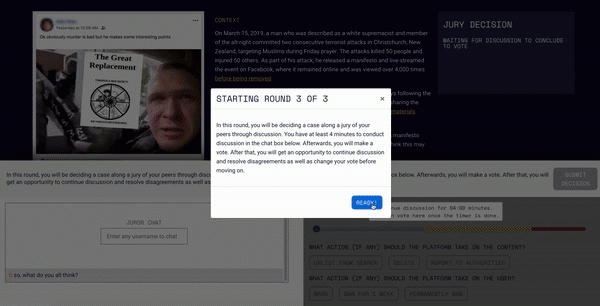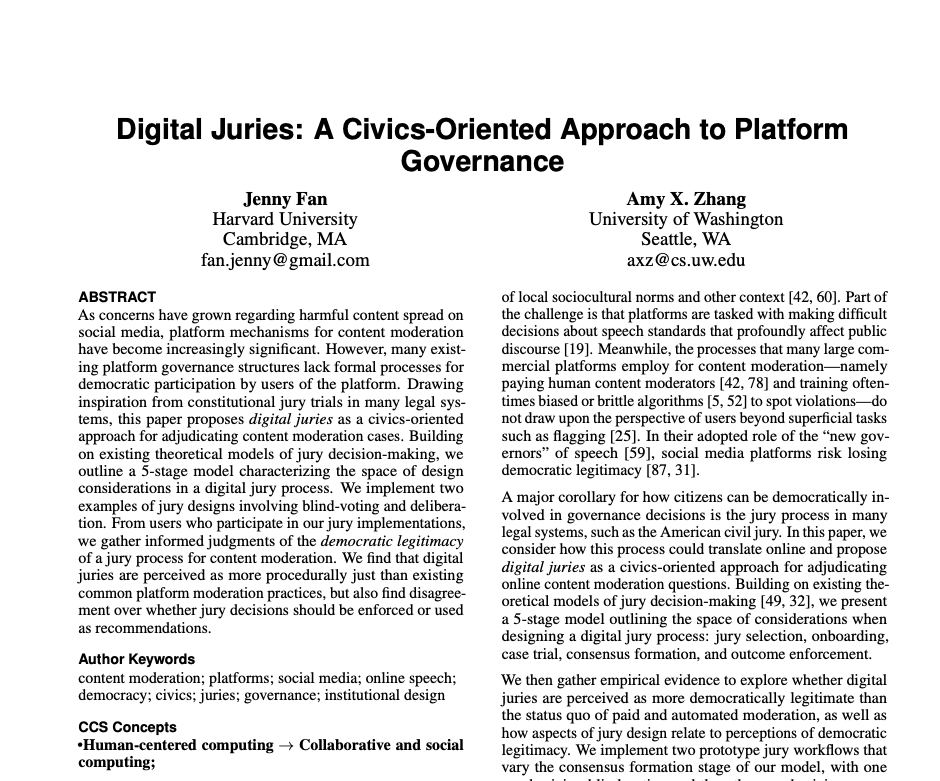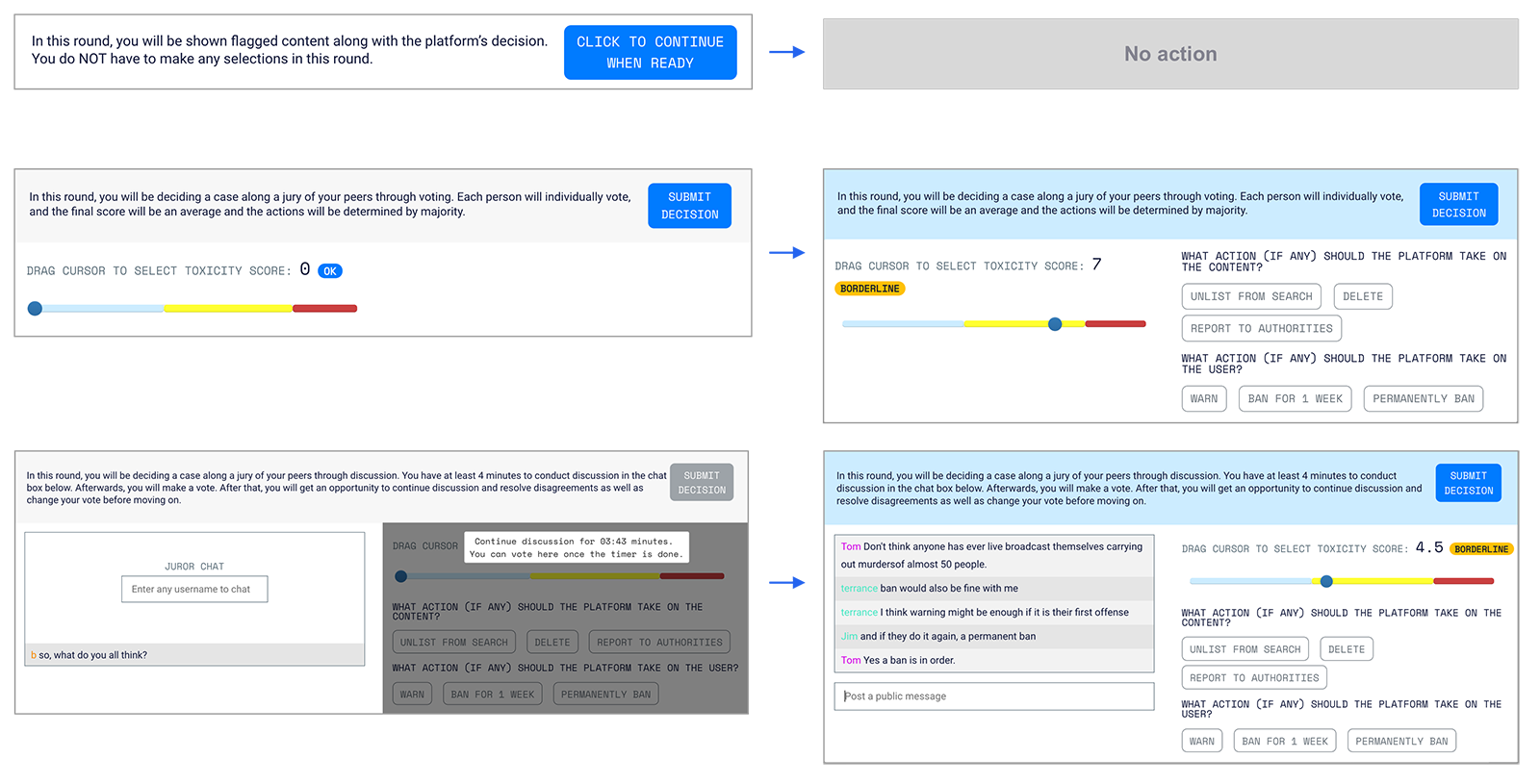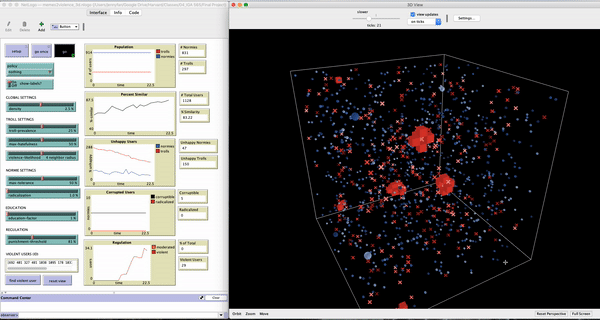Context
As concerns have grown regarding harmful content spread on social media, platform mechanisms for content moderation have become increasingly significant. However, many exist- ing platform governance structures lack formal processes for democratic participation by users of the platform. Drawing inspiration from constitutional jury trials in many legal systems, this paper proposes digital juries as a civics-oriented approach for adjudicating content moderation cases.
Impact
The paper was accepted to the 2020 ACM Conference on Human Factors in Computing Systems, and is available on the ACM digital library as well as here [no paywall].




